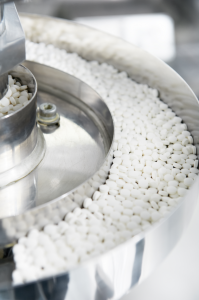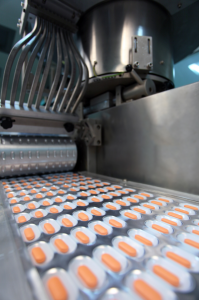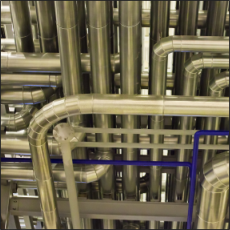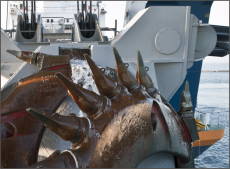Pharmaceutical Projects
Turn-key design and installation of a batching process for a pharmaceutical manufacturer

SUMMARY: A programmable logic controller (PLC) was used to control the batch manufacturing process in a hazardous (Class 1, Division 2) location. A human machine interface (HMI) workstation and an operator interface terminal (OIT) were used to provide system status and allow operators to control the batch.
DESCRIPTION: The manufacturing process requires the sequential batching of a number of ingredients through various tanks, mixers and reactors. The PLC controls the sequencing of the batch as well as the various temperature, pressure and vacuum control loops used throughout process. The PLC interfaces with the HMI to prompt the operator at key points in the process. The HMI provides the operator with the means of entering batch sizes and recipe additions. All instrumentation was purchased by Kruse Integration and installed as a turn-key project. The process equipment was all located in a hazardous (Class 1, Division 2) location. The entire system was validated for IQ, OQ and PQ qualifications.
USP Water Purification/Batching System

SUMMARY: Replaced the existing control system on a pharmaceutical USP water purification system with a new PLC/HMI based system allowing password security and access, operator interface for setup, process parameter configuration and alarm annunciation. System controls monitored various quality devices (rupture disks, filter pressures, temperature and UV status) as well as conductivity and TOC.
DESCRIPTION: The process takes incoming city water, purifies it through various filter beds, UV treatment, and sub-micron particle filtration to make USP grade water for manufacturing pharmaceutical products. After the water is cleaned, it is stored in a reservoir that maintains constant water circulation. Operators select a destination tank, batch size and dispense temperature, and the system will dispense the correct water volume at the correct temperature. Various control parameters are entered into displays that provide upper and lower control limits for various system analog devices. The system is completely self-monitoring, and when a problem is determined to exist, the system will disable various processes (Rinsing, Batching and Sanitizing) until the problem is corrected and acknowledge. All system events are archived, and the archive is periodically offloaded onto a ZIP disk for long-term storage. Data may be reviewed from the Operator Workstation by specifying date and time delimiters.
Design and installation of a spray dryer control system for a pharmaceutical manufacturer
SUMMARY: A PC-based control package and (HMI) workstation were used to provide control of a spray drying process.
DESCRIPTION: The PC-based control package is used to control product temperatures, vessel temperatures, spray dryer pressure, start/stop control of feed pumps, etc. All control loops and device interlocks are programmed in the control package. The package interfaces with separate I/O modules for control. The HMI provides system status and the means to setup and control the process. The entire system was validated for IQ, OQ and PQ qualifications.
Packaging Line Integration

SUMMARY: Networked all OEM PLCs to establish supervisory control over the entire packaging line.
DESCRIPTION: A Profibus communication module was added to each OEM PLC on the Filling and Packaging Line. Additional code was developed for each of the PLC programs to pass faults, operator setpoints, equipment status and interlocks to the HMI (Human Machine Interface). An HMI was included to allow single point access to all equipment parameters on the entire line. The HMI was networked to the Plant Floor Server for Line Recipe Management, downtime storage, event logging and fault data collection. The Line Operators would simply select a Product Recipe which would download speeds, levels, limits, times and other essential parameters to each piece of equipment on the line. This reduced time to setup the line and improved accuracy for product. Additionally, all equipment faults, events and status could be monitored and collected for validation and archival records.












